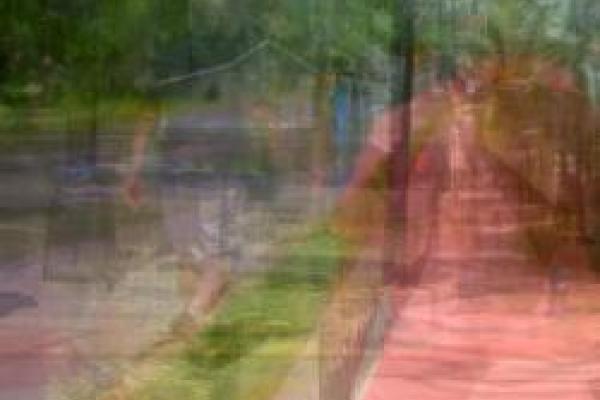
OSU professors Robert Ladislas Derr (Art), Heather Inwood (East Asian Languages and Literatures), and Norah Zuniga-Shaw (Dance) come together to consider how corporeal engagement inflects and is inflected by technology and arts practices. Derr stages both a corporeal and a historical encounter with Christopher Columbus, sensing his way through both past and present, Inwood analyses excretory excesses written into contemporary Chinese poetry, especially in the School of Rubbish and the School of Spam, and Zuniga-Shaw and her students offer perspectives on how technologically mediating physical practices such as dance opens up new questions around the body, movement, aesthetics, and decision-making.
In his project, Discovering Columbus, Robert Ladislas Derr utilizes the power of perspective and video technology to explore the convergence of ten towns in the U.S. named after the 15th century explorer. Constellations transposed on streets serve as navigation. Transcending time and place, his point of departure is wanderlust and the iconic explorer.
Heather Inwood’s presentation will look at Chinese poetry on the internet that deals with the human body, examining avant-garde poems published online in the mid-2000s to consider the connection between the human body and digital technologies. She will explore the changes that occurred when practitioners of “body writing” (shenti xiezuo) moved online and suggest that poems that deal with bodily processes and sensations function as a form of meta-poetry, or poetry about poetry. The School of Rubbish (lajipai), whose writings included a style known as “shit and piss writing,” and the School of Spam (guanshuipai), whose members liked to “spam” internet forums with their crudely written poems, are used as examples.
Norah Zuniga Shaw will discuss choreographic knowledge as a locus for interdisciplinary and intercultural creativity. Shaw’s most recent project with William Forsythe and Maria Palazzi, Synchronous Objects, was launched online and installed at the Wexner Center for the Arts in 2009. She will discuss how this work has impacted international audiences and connected viewers with the deep structures of a dance and the generative ideas contained within.
The speakers will consider how corporeal engagement inflects and is inflected by technology and arts practices. Derr stages both a corporeal and a historical encounter with Christopher Columbus, sensing his way through both past and present, Inwood analyses excretory excesses written into contemporary Chinese poetry, especially in the School of Rubbish and the School of Spam, and Zuniga-Shaw and her students offer perspectives on how technologically mediating physical practices such as dance opens up new questions around the body, movement, aesthetics, and decision-making.
Convened by Harmony Bench (Dance). Sponsored by the Digital Arts and Humanities Working Group.
